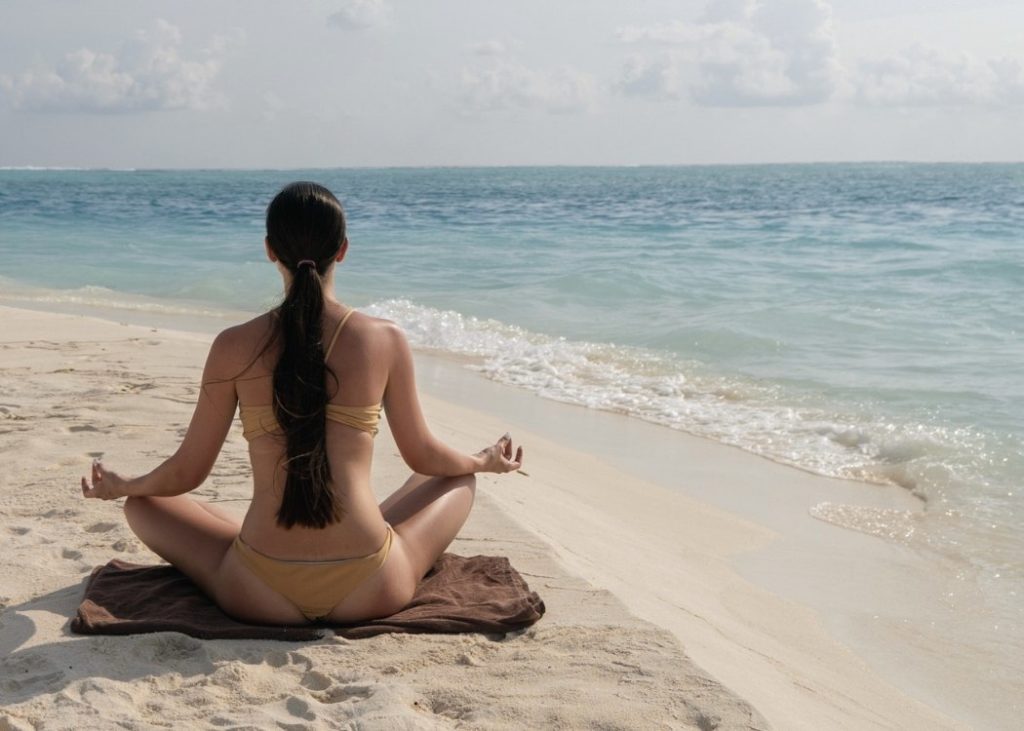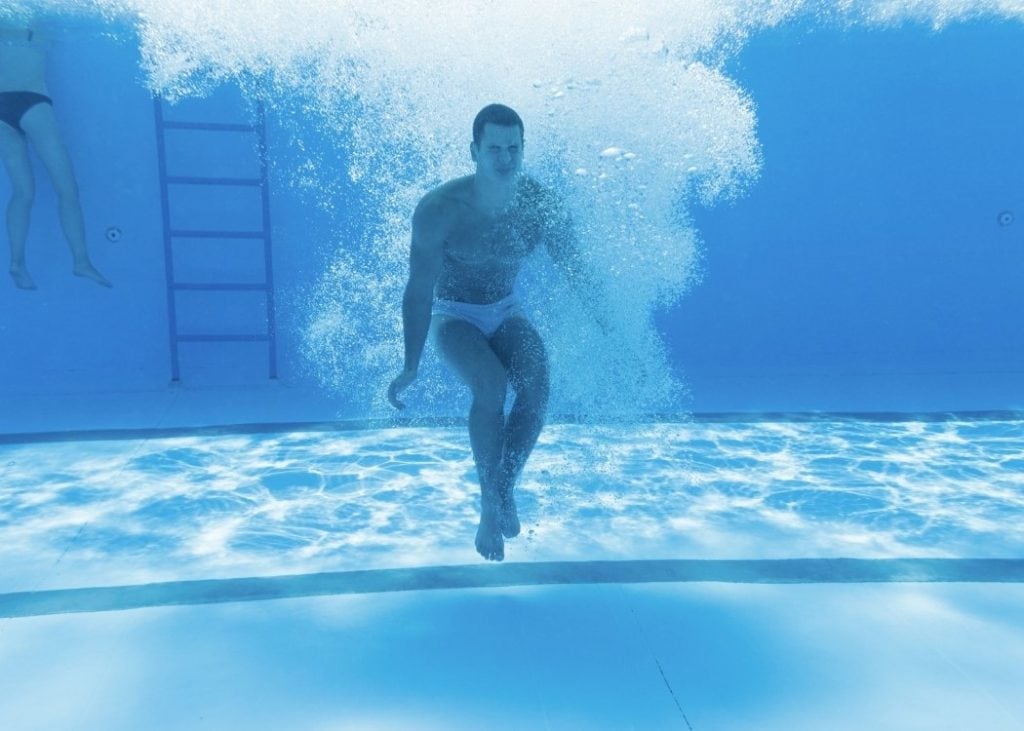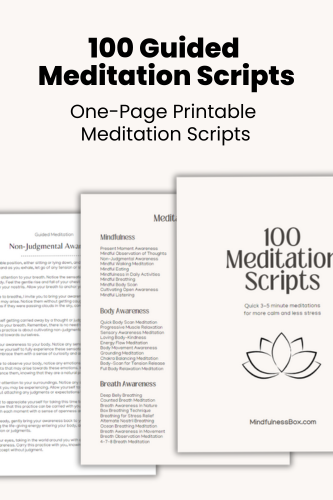Water meditation techniques are any meditation method that focuses on water. It includes meditating near water, listening to the sounds of water, or even immersing yourself in water while you meditate.
One of the most universally relaxing sounds we can hear as humans is the sound of running water.
These 100 meditation scripts were created to help beginner and intermediate meditators practice key mindfulness concepts like self-love, forgiveness, gratitude, and inner peace.
Designed to fit into busy schedules, each meditation script lasts 3-5 minutes. Perfect for starting or closing a group meditation; for yoga, coaching, or therapy sessions; or for your personal meditation practice.
That’s why so many spas have the sounds of gurgling creeks playing in the background. It’s also why meditating next to rivers, lakes, and oceans is so captivating.
Beyond that, the process and goals of water meditation are the same as other meditation techniques. The only change is the context and focus.
The goal is to build your practice of awareness by nonjudgmentally observing your thoughts, feelings, and sensations, and bringing your attention back to the present moment when you get distracted.
Let’s explore the different types of water meditation techniques to inspire your practice.
Listing to water sounds while you meditate

The first and most common form of water meditation doesn’t actually involve physical water.
Instead, most typically, you meditate with the sounds of water in the background as a way to aid you in reaching a place of calm.
Here’s how it works:
First, find an audio track that includes relaxing water sounds, like the sound of a river, or of waves gently crashing on the shore.
Then, put headphones on, in order to create an immersive environment.
Finally, proceed with your favorite form of meditation as normal. If you’re practicing concentration meditation, similar to Vipassana, you might start by focusing on your breath, breathing deeply in and out, while gently bringing your awareness back to your breath when it strays.
You might also try a body scan, noticing how the top of your head feels and any sensations that appear; then, moving down to each part of the rest of your body, doing the same.
Alternatively, you can try concentration meditation, with the focus of your concentration being the sounds of the water. Instead of focusing on your breathing, focus on the sounds of the waves or of the stream passing by. As your thoughts stray from those sounds, gently and nonjudgmentally bring them back to the sounds of water.
It’s also possible to visualize water in your mind. For example, you might lie down and imagine that you’re floating in a pool of cool water, as a way to create a mental state that’s more susceptible to reaching a deep, meditative way of being.
Meditating in the water

There’s also the possibility of actually meditating in the water.
Moving your body into a different context can be an interesting way to process new sensations in the course of your meditation. You may find that the normal sensations and thoughts you have are replaced by new ones, as a result of the new environment you find yourself in.
Starting simple is good – in a shallow pool, for example, or with your feet dangling in a cool stream.
Is it possible to meditate in water?
Yes, it’s possible to meditate in water. There’s nothing special you need to do in order to meditate in water. Just make yourself comfortable, ensure you’re in a safe place, and start your practice as normal.
How do you meditate in a pool?
To meditate in a pool, you’ll want to find an area shallow enough to sit in. There’s also the possibility of floating on top of the pool using a floatation device. However, you may find that the constant movement of the floatation device disturbs the peace you are trying to create and distracts you from your meditation.
The pool is also a good place for “informal” mindfulness practice.
What happens if you jump into the water and truly notice all the sensations that arise? The way the water feels on your skin? The sensation of being nearly weightless? Play around with increased awareness on your next trip to the pool.
How do you meditate in the shower?
The shower is a good place to experiment with different sensations.
Try doing a standing body scan meditation in the shower. Notice how the water feels as it hits the top of your head.
Then, move your awareness down to different areas, noticing as the water runs down your body.
You can also experiment with different water temperatures, noticing how hotter and colder temperatures feel.
Then, as you shampoo your hair, go more slowly and deliberately than normal.
Since showers happen every day, they’re a great opportunity to shake yourself out of your normal routine. You may find that you go through the motions of this daily activity on autopilot, and that slowing down and truly noticing creates a different experience entirely.
Building inner peace with water meditations
Whether you decide to immerse yourself in water itself, or just the sounds of water, water meditation is a good way to shake up your meditation routine and experiment with new sensations.
You’ve jumped into a pool before, and you’ve dipped your feet into streams before. You’ve taken thousands of showers. But what does it feel like to really stop and observe the sensations that arise on the deepest level possible? How does it change your experience?
You’ve heard the sounds of ocean waves before, and you’ve heard what a mountain stream sounds like. But what does it sound like when you give your full attention to those sounds?
If you’re looking for a new angle on your path to deeper peace, give water meditation a try.

My mindfulness practice kicked off in 2016 with a ten-day silent retreat. Since then, I’ve read dozens of books about mindfulness and completed hundreds of hours of meditation. Thinking about what makes humans happy, calm, and peaceful is endlessly fascinating to me.


